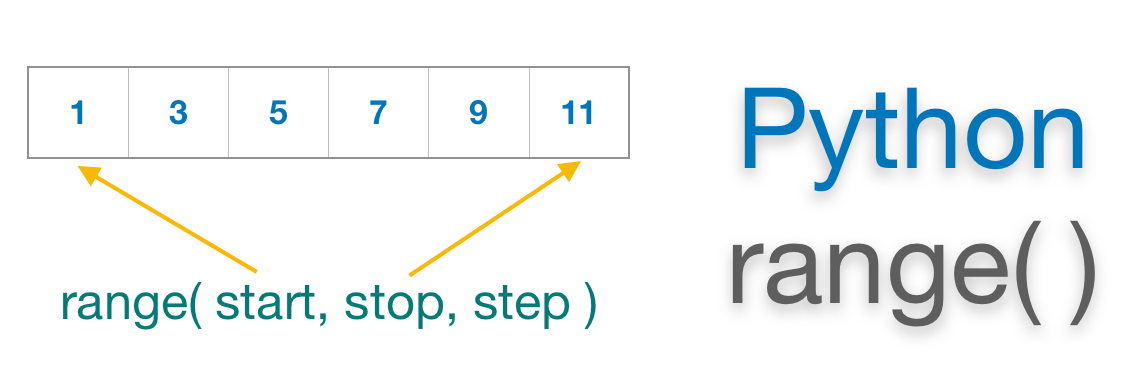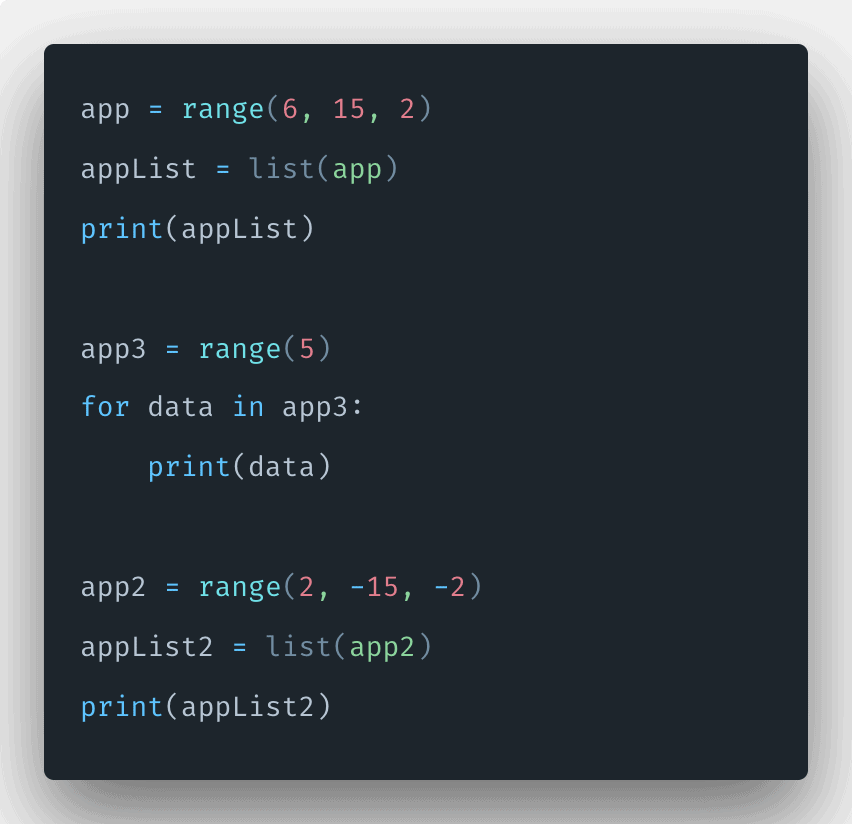
In a list or tuple, their storage in memory is linear with the number of elements. You may wonder that why we need a separate class for range, while we can do these operations that range does, with list of tuple also. 42ĥ8 Advantages of range over list or tuple

Run the above program, and we should get r and r print to the console as shown below. In this example, we shall define a range, range(2, 100, 8), and print elements at index 5 and 7. The same formula we used to compute i th element in a range, with a positive or negative step can be used to compute the element using index. Just like any sequence, you can access elements of a range using index. When you run the above program, we should get the elements that we computed at the start of this section. In this example, we shall iterate over a range, with negative step, and during each iteration, let us print the range element. R = 8 + (-2 * 3) = 2 > 2 false, this does not go into the range, and the range stops here Example Program R = 8 + (-2 * 2) = 4 > 2 true, this goes into the range R = 8 + (-2 * 1) = 6 > 2 true, this goes into the range r = start + (step * i) 2 true, this goes into the range Usually, when step is negative, start is greater than the stop, and r should be greater than stop.įor example, if start=8, stop=2 and step=-2, then the contents of range are calculated as given below. r = start + (step * i) such that i>=0, r=0, r>stop When you provide a positive step to range(), contents of the range are calculated using the following formula. Run the above program and you should get the range with contents starting at 4 incrementing in steps of 1 until 9. Let us write a Python program, with range() accepting start and stop. The default value of step is 1, and therefore the contents of range has elements starting from start, in steps of 1 until stop. When you provide two arguments to range(), the first is start and the second is stop.

Run the above program, and the contents of the range(5) are printed to the console one after another in a new line. Let us write an example Python program with range(stop). The default value of start is 0 and step is 1. When we give only one argument to range(), the argument is considered as stop. If step is not specified, then 1 is taken as default value for step. Step represent the value by which the elements are updated from start to end.

Meaning, the range() returns a range that can be iterated only until stop, but not stop. If start is not specified, 0 is taken as start. Meaning, the range() returns a range that contains start as first element. Start represents the starting of the range. If you provide two or three arguments, then the second form of the constructor range(start, stop) shall be considered. Internally range(stop) calls the constructor range(start, stop) with start=0. If you provide only one argument to range() function, the first form of range() function in the above syntax range(stop) shall be used with default value of start=0. range(stop)Īll start, stop and step should be integers. Range() function is a constructor of range class. So, range() function and range constructor are same, and we shall address them with these names interchangeably based on the context. range() function is constructor to the range class. In Python, range is a class, that can represent an immutable sequence of numbers.


 0 kommentar(er)
0 kommentar(er)
